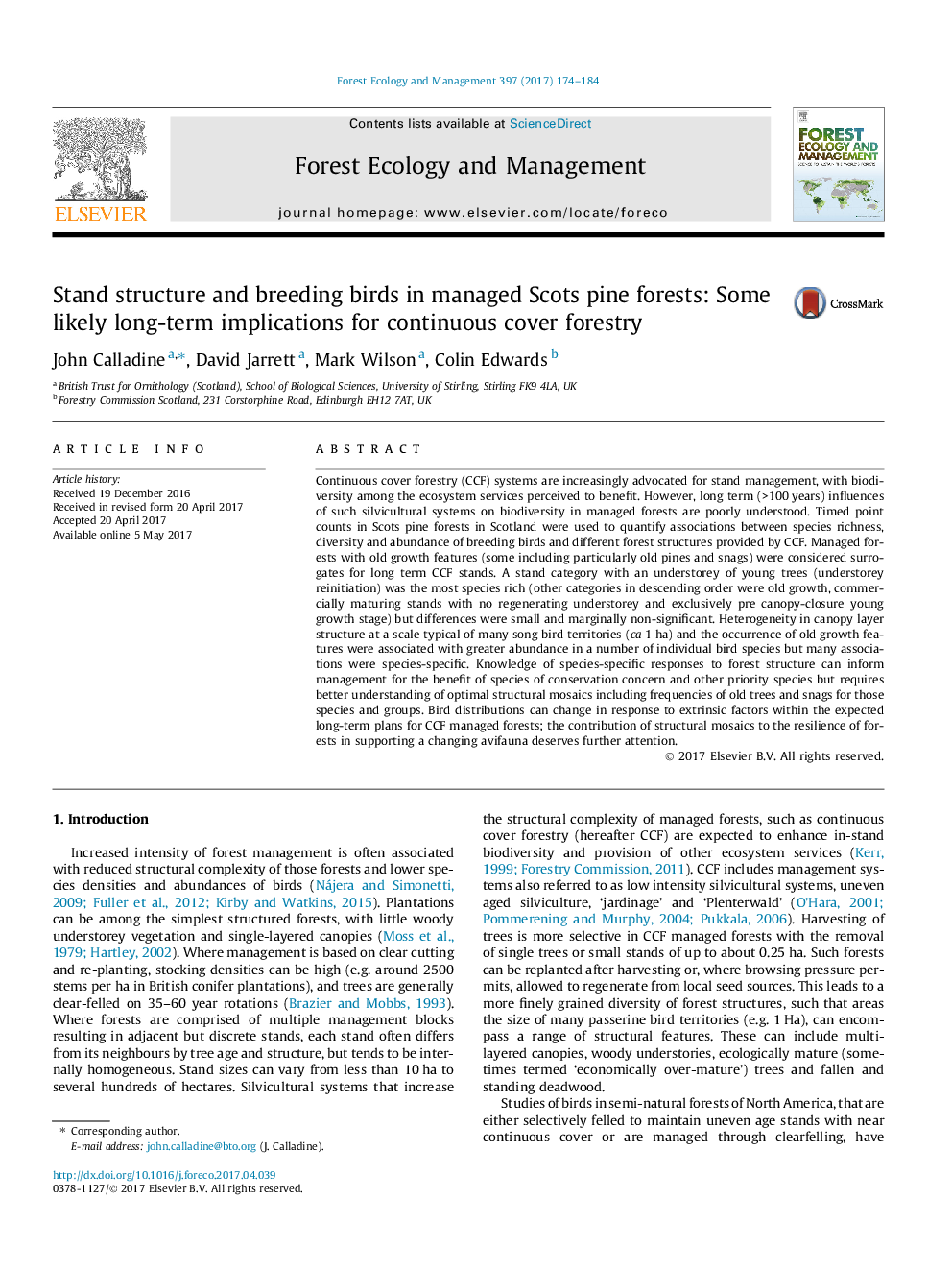| کد مقاله | کد نشریه | سال انتشار | مقاله انگلیسی | نسخه تمام متن |
|---|---|---|---|---|
| 6459364 | 1421361 | 2017 | 11 صفحه PDF | دانلود رایگان |
- Many associations between bird abundance and pine forest structure were specific to bird species.
- Heterogeneity in canopy layer structure was associated with greater abundance of many species.
- Mature pines and snags (old growth features) were associated with greater abundance of some species.
- More bird species occurred in stands with a regenerating understorey but differences were small.
Continuous cover forestry (CCF) systems are increasingly advocated for stand management, with biodiversity among the ecosystem services perceived to benefit. However, long term (>100Â years) influences of such silvicultural systems on biodiversity in managed forests are poorly understood. Timed point counts in Scots pine forests in Scotland were used to quantify associations between species richness, diversity and abundance of breeding birds and different forest structures provided by CCF. Managed forests with old growth features (some including particularly old pines and snags) were considered surrogates for long term CCF stands. A stand category with an understorey of young trees (understorey reinitiation) was the most species rich (other categories in descending order were old growth, commercially maturing stands with no regenerating understorey and exclusively pre canopy-closure young growth stage) but differences were small and marginally non-significant. Heterogeneity in canopy layer structure at a scale typical of many song bird territories (ca 1Â ha) and the occurrence of old growth features were associated with greater abundance in a number of individual bird species but many associations were species-specific. Knowledge of species-specific responses to forest structure can inform management for the benefit of species of conservation concern and other priority species but requires better understanding of optimal structural mosaics including frequencies of old trees and snags for those species and groups. Bird distributions can change in response to extrinsic factors within the expected long-term plans for CCF managed forests; the contribution of structural mosaics to the resilience of forests in supporting a changing avifauna deserves further attention.
Journal: Forest Ecology and Management - Volume 397, 1 August 2017, Pages 174-184
